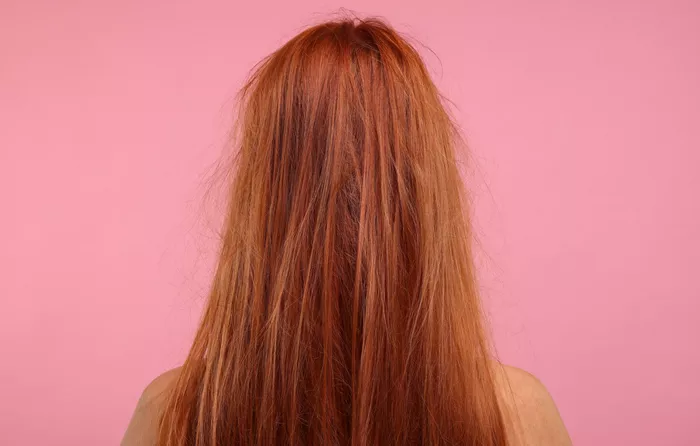Frizzy hair is a common struggle for many people. It can feel unpredictable, frustrating, and hard to control. You might notice it on humid days, after washing your hair, or even when you wake up in the morning. But why does frizz happen? The answer lies in the science of hair structure, external factors like weather, and daily habits. Let’s break down the causes of frizzy hair in simple terms and learn how to manage it.
Understanding Hair Structure
To grasp why frizz happens, you first need to understand how hair is built. Each strand of hair has three layers:
- The Cuticle: This is the outer layer, made of tiny, overlapping scales (like roof shingles). When the cuticle lies flat, hair looks smooth and shiny. If the scales lift, hair becomes rough, dull, and frizzy.
- The Cortex: The middle layer holds proteins (like keratin) and water. It gives hair its strength, elasticity, and natural curl pattern.
- The Medulla: The innermost layer is soft and spongy, but not all hair types have this.
Why does this matter?
Frizz occurs when the cuticle layer is damaged or lifted, exposing the cortex. This allows moisture from the air to seep in, making hair swell and the cuticle “stick out” unevenly.
Humidity: The Biggest Culprit
Humidity (moisture in the air) is a leading cause of frizz. Here’s how it works:
- Hair is hygroscopic, meaning it absorbs water from the environment.
- When dry hair encounters humid air, the cortex soaks up moisture, causing strands to swell.
- This swelling pushes the cuticle scales upward, creating a rough, frizzy texture.
Curly vs. Straight Hair:
Curly or wavy hair is more prone to humidity-induced frizz. Its spiral shape makes it easier for moisture to enter multiple parts of the strand. Straight hair has a smoother surface, so moisture absorbs more evenly.
Hair Damage Weakens the Cuticle
Damaged hair is more likely to frizz. Common causes of damage include:
- Heat Styling: Blow dryers, straighteners, and curling irons strip moisture from hair. Over time, this weakens the cuticle.
- Chemical Treatments: Bleaching, coloring, or perming breaks down the cuticle’s protein structure, leaving gaps in the protective layer.
- Brushing Wet Hair: Hair is weakest when wet. Rough brushing can snap strands or tear the cuticle.
- Sun Exposure: UV rays dry out hair and weaken keratin, making the cuticle porous.
The Result: Damaged hair can’t seal moisture in or keep humidity out. This creates a cycle of dryness, swelling, and frizz.
Your Hair Type Plays a Role
Hair texture and porosity (how well hair absorbs moisture) influence frizz:
High Porosity Hair:
-
- Has gaps in the cuticle, so it absorbs moisture quickly but loses it just as fast.
- Common in curly, coarse, or chemically treated hair.
- Prone to frizz because it soaks up humidity like a sponge.
Low Porosity Hair:
-
- Has a tightly sealed cuticle, so moisture struggles to enter.
- Often feels “product-resistant” and can get frizzy if products sit on the surface instead of absorbing.
Curly and Wavy Hair:
-
- Natural curls create more surface area for humidity to affect the hair.
- Oils from the scalp don’t travel easily down curly strands, leaving the ends dry and frizz-prone.
Product Buildup Traps Moisture Unevenly
Using too many styling products (gels, mousses, hairsprays) can leave residue on hair. This buildup:
- Blocks moisture from absorbing evenly.
- Creates a sticky surface that attracts dirt and pollutants.
- Weighs hair down in some spots while leaving other areas dry and frizzy.
Fix It: Use a clarifying shampoo once a week to remove buildup. Follow with a deep conditioner to restore moisture.
Hard Water and Minerals
Hard water contains minerals like calcium and magnesium. Over time, these minerals:
- Stick to the hair shaft, making it feel rough and dry.
- Prevent conditioners and oils from moisturizing properly.
- Leave hair dull and frizzy, even after washing.
Solution: Install a shower filter to soften water. Rinse hair with bottled or distilled water occasionally.
Health and Diet Matter
Your hair reflects your overall health. Factors that contribute to frizz include:
- Dehydration: Not drinking enough water dries out hair from the inside.
- Nutrient Deficiencies: Lack of protein, vitamins (A, C, D, E), or omega-3 fatty acids weakens hair structure.
- Hormonal Changes: Pregnancy, menopause, or thyroid issues can alter hair texture and moisture levels.
Tip: Eat a balanced diet rich in eggs, nuts, leafy greens, and fish to strengthen hair.
How to Prevent and Manage Frizz
While you can’t control the weather, you can take steps to tame frizz:
Wash Gently:
-
- Use sulfate-free shampoos to avoid stripping natural oils.
- Condition every time you wash—focus on the ends.
Seal the Cuticle:
-
- Rinse hair with cool water after conditioning to flatten the cuticle.
- Apply a leave-in conditioner or hair serum to create a protective barrier.
Avoid Heat:
-
- Let hair air-dry when possible.
- If using heat tools, apply a heat protectant spray first.
Humidity-Proof Styles:
-
- Braids, buns, or silk scarves shield hair from moisture.
- Use anti-humidity hairsprays or creams with ingredients like silicones or oils.
Hydrate and Protect:
-
- Sleep on a silk pillowcase to reduce friction.
- Get regular trims to remove split ends.
Conclusion
Frizz happens when hair’s protective layer is compromised, moisture levels swing wildly, or external factors like humidity take over. By understanding your hair type, avoiding damage, and using the right products, you can keep frizz under control. Remember, healthy hair starts with gentle care—both inside and out!
Related topics:
Why Does My Hair Get Frizzy When I Sweat?
How Can I Keep My Hair from Being Frizzy? Proven Solutions


